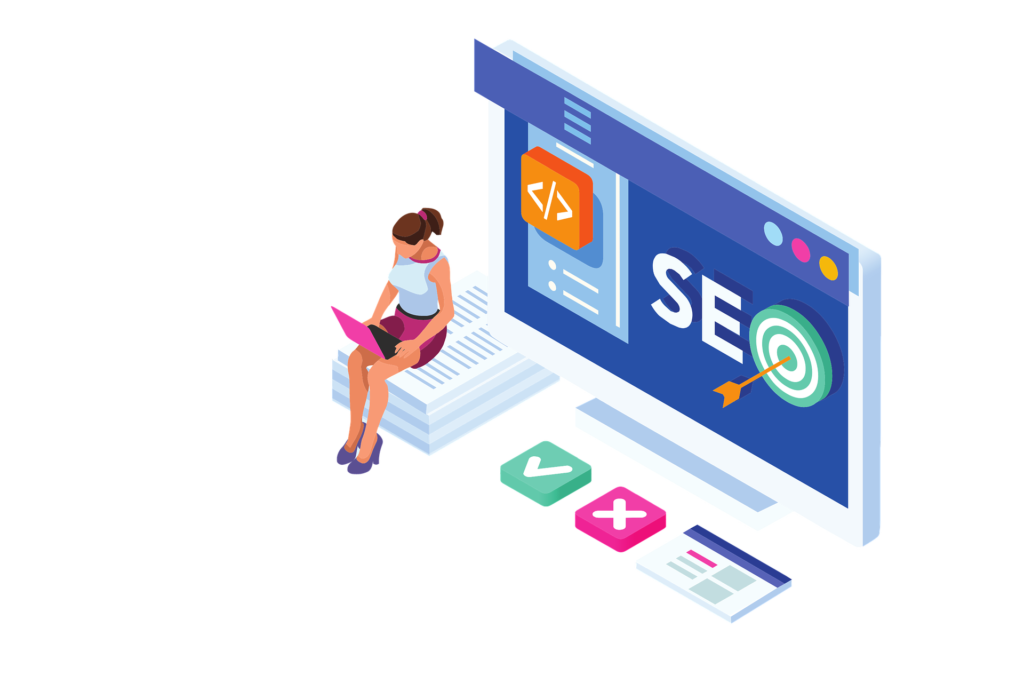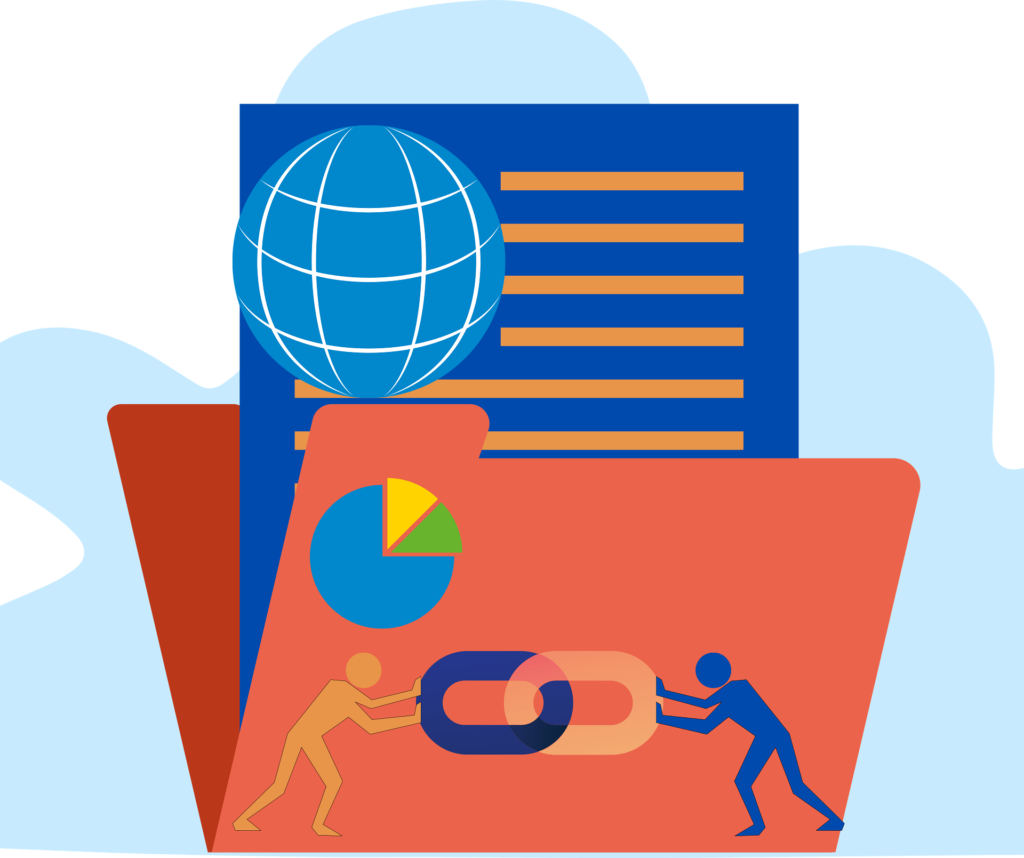On-page SEO (aka on-site SEO) is the process of optimizing mortgage website pages to rank higher in search engines to increase organic traffic. It focuses on optimizing page-level elements. These include meta tags, headings, subheadings, image tags, and page structure as well as content built around the search intent.
Here, we’ll cover most important on-page SEO strategies to help your mortgage site higher in search results.
Let’s start with why on-page SEO is so important.
It is essential that your mortgage website and its content are optimized to the latest practices recommended by the top search engines especially Google. This way search engines can understand your site better. And will rank it higher.

Here are some of the key aspects why on-page SEO is so important to your online marketing success:
- It helps to increase website traffic. With the use of on-site optimization your website will have more search engine visibility. With a few simple adjustments, your website can get in front of more potential loan shoppers, will greatly increase your chances at turning potential buyers into actual paying customers.
- It enhances user experience on your website. By ensuring your pages are easy to navigate, load quickly, and provide valuable content, indeed you create a positive user experience.
- It can improve your website rankings. On-page SEO allows you to optimize your web pages for specific keywords that are relevant to your content and target audience. Undeniably proper on-page SEO can boost the possibility of your mortgage website being found. Whenever a search is made that relates to your targeted keywords.
- It brings in relevant traffic to your website. When your mortgage website homepage is optimized with a your potential customer in mind, it will definitely improves the likelihood of conversions. And this is done by strategically placing keywords in meta tags, page titles, headings, content, and inside relevant image tags.
Essentially, it assists in optimizing your website for the humans as well as of the bots used by search engines. Regardless of how good and relevant your website is. Without proper on-site SEO, your website may not be able to to rank for search queries specific to your business.

Some of the best on-page SEO practices.
High-quality, Helpful Content
One way Google weights your site is based on E-A-T, or expertise, authoritativeness, and trustworthiness. Unique good-quality content will show your expertise and authority on the relevant topic. Trustworthiness comes later automatically, when you’ve content that engage your audience. When people find them interesting and informative, they’ll refer to them. This let search engines know that your website is a credible and valuable source of information. Thus, while writing engaging content keep the following in sight:
- First, carry out thorough research and understand your audience and their needs.
- Add keywords and key phrases naturally, throughout a page.
- Use a variety of content types (i.e. text, images, infographics and videos).
- Your primary focus must be on the value that your content are going to provide to your reader.
- Optimize the article with a proper structured approach for a better user experience.
Write Keyword-rich Meta data
You need to know what your target customers are searching for and create content that includes those terms (keywords). And this is done by inserting keywords into the page meta data. A web page’s meta data will be in the HTML code of each page. And specifically includes your page’s title-tag and meta description which are used in search engine results to list your pages.
Have your meta data optimized with well researched targeted keywords and detailed content. This will help users and search engines know what your page has to offer. These tags provide search engines with a brief summary of your webpage’s content and can help improve your search visibility.
Incorporate Targeted Keywords Strategically
Place your target keywords naturally into your website’s content, including headings, paragraphs, and image alt tags. But without getting into the sin of “keyword stuffing“. Some key areas you must add your primary keywords to are:
- Page Heading (most of the time it’s a H1 tag)
- First paragraph
- Sub headings (H2s, H3s, etc.)
- Image alt tags
Headings And Subheadings For Better On-Page SEO
Headings and subheadings are used to organize content in a structured way. You should use different levels of headings (H1, H2, H3, etc.) to indicate the main topic, major sections and subsections of your page This helps readers go through your mortgage landing page content with ease.
A heading (H1 tag) should appear at the beginning of a page to briefly describes the content that follows. It should be around 60 to 70 characters and not more than 12 words. H1 tag is the most significant header and should contain your primary keyword or key phrase.
And then, we have H2, H3 etc. tags for section and subsection headings. You should incorporate your primary and secondary keywords as a signal to search engines what the section is about. Make your subheadings descriptive. Readers will understand the context and relevance of each section better.
This will also entice users to stay on your page longer and will prove your expertise, authoritativeness, and trustworthiness to search engines.

Optimize Web Page URLs
Google suggests “When possible, use readable words rather than long ID numbers in your URLs.“. Google also say use “Simple, descriptive words in the URL“. This simply means page URL should accurately describes what the page is about. In fact clean, descriptive and localized URLs help search engines better understand what a page is about. Finally, here are industry standard strategies to optimize your web page URL:
- Include your primary keyword.
- Use real descriptive words to help convey the intent of a page.
- Keep your URL/link sweet, short and simple.
- Use hyphens between words (also called as pretty permalink – WordPress uses this with success).
Internal Links
Internal links are hyperlinks that connect one page on a website/domain to a different page on the same domain. For example, as this page is about in-page SEO, it can point to another page (or pages) related to Search Engine Optimization such as 20 Powerful Ways To Drive Traffic To Your Mortgage Website.
Internal links help your website users navigate your website. They provide paths for search bots to discover new content. And create an surprisingly powerful network of related pages. As a result of interlinking, visitors spend more time exploring your content. To the search engines this means that your site is valuable, which can boost your rankings.
Why is internal linking important?
- Improves navigation
- Spreads link juice
- Creates a website proper website structure
- Increases user time on your mortgage website
- Increase page views
- Decreases bounce rate on your mortgage landing page
- Guides website visitors to high-converting pages
Key Points To Consider For an Effective Internal Linking Policy:
- Identify genuine internal linking opportunities (Don’t Overdo It).
- Ensure anchor text has relevant keyword.
- Use internal links to send users to your most valuable pages.
- Regularly update internal links.

External Links
By comparison, an external link (aka outbound link) is a hyperlink that points at an external website. It could be broker website or a mortgage lender’s site. By the looks of it, using external links seems illogical. Because these links take people away from your website. But on the contrary, a great external linking strategy can lead to a high ranking position for your mortgage page.
Because by linking to websites that are trustworthy and relevant to your niche. You can show search engines that your website is a valuable resource for users. Furthermore, valuable external links provide your readers with references. Which will help establish your website’s authority.
For the same reason, this can lead to improved rankings. Which in turns increases the likelihood that your website will be found by users searching for relevant keywords.
Include and Optimize Photos, Illustrations, Images
Having images inside our mortgage blog post make it more pleasing to the reader. People like visual mode of information. Images are processed more quickly, transmit information faster and reinforce learning.
Therefore, use of images on your page will engage and help users understand your content better. This results in a better user experience, which is a significant ranking factor for Google. To enhance this even further, consider implementing following best practices for image SEO:
- Use visually attractive original images and photos where ever possible
- Images must reflect the intent of the page whether it is to reinforce a point, evoke a certain emotion or just to demonstrate an abstract concept.
- Use a descriptive image filename
- Have high quality images with correct file format for your website
- Use responsive images
- Compress/Optimize them in order to reduce page load times
- Make sure images are compliant with Title Tags, Alt Text, and ARIA Tags
- Add XML image sitemaps
- Serve images via an image CDN to optimize site speed
Summing up On-page SEO
- Original valuable content
- Include keywords in Title and Description tags
- Add keywords naturally through the page content
- Use headings and subheadings tags to include keywords and secondary keywords
- Properly structure your page with major section and subsections
- Use a descriptive web page URL
- Add links to internal pages as well as to the external valuable authority domains
- Use optimized photos, illustrations and images
Now you know what you need to do in order to increase your mortgage website search engine ranking. So lets get to work, and execute the techniques mentioned above.
You can carry out all the in-page SEO tasks using the website management (WMC) center that comes with iReadySites premium mortgage websites.

Leave a Reply